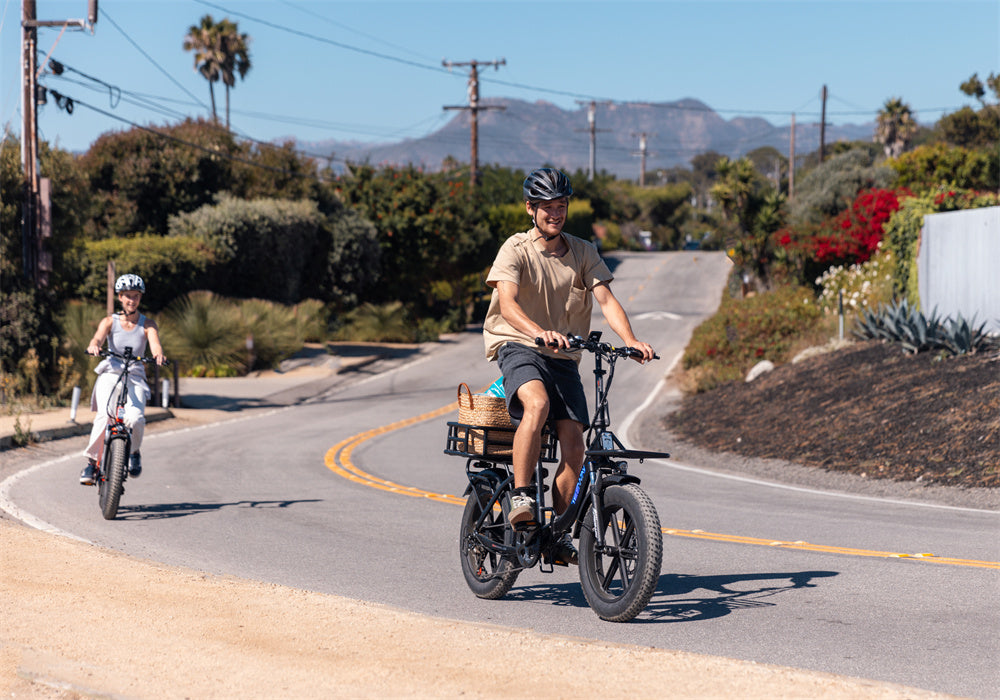Electric bikes, have revolutionized urban mobility, offering a greener alternative to traditional transportation methods. At the heart of an e-bike's functionality is the pedal-assist system, which significantly enhances the riding experience by reducing the effort required to pedal. This system relies primarily on two types of sensors: cadence sensors and torque sensors. Each plays a critical role in how the e-bike assists its rider. Pedal-assist systems work by detecting the rider's pedaling effort and immediately providing motor assistance, making it easier to maintain speed with less fatigue
Cadence Sensors Explained
Cadence sensors are fundamental components of many pedal-assist e-bikes. They measure the rate at which a rider pedals, often counted as revolutions per minute (RPM). The primary function of a cadence sensor is to detect whether the rider is pedaling and at what speed, without assessing the force exerted.
Detection Method: Cadence sensors typically use magnets and a Hall effect sensor. A magnet attached to the crank arm passes by the Hall effect sensor with each pedal stroke, generating a signal that indicates pedaling activity.
Functionality in E-Bikes: When the sensor detects pedaling, it sends a signal to the e-bike’s controller, which then activates the motor. The motor’s assistance level depends on the bike’s settings but is generally not modulated by the pedaling force.
Advantages: These sensors are straightforward, making them less expensive and easier to maintain. They are ideal for riders who prefer a consistent assistance level regardless of the pedaling force.

Torque Sensors: Enhancing Rider Experience
Torque sensors, by contrast, offer a more sophisticated approach to pedal assistance, providing a more intuitive riding experience that mimics traditional biking. These sensors measure the actual force a rider exerts on the pedals, allowing the motor to respond dynamically to the rider's input.
Torque sensors typically utilize strain gauges that measure the deformation of a metal part when force is applied. This deformation is converted into an electrical signal that is proportional to the force exerted by the rider.
The more force the rider applies, the more assistance the motor provides. This creates a responsive riding experience that can adapt to different riding conditions and personal effort levels.
Torque sensors are particularly beneficial for those who seek a natural riding feel. They are excellent for variable terrain, allowing the motor to adjust its output based on the actual pedaling force rather than just the pedaling motion.

Comparing Cadence and Torque Sensors
While both cadence and torque sensors serve the same ultimate purpose—to activate the e-bike’s motor— their approaches and impacts on the riding experience differ markedly.
-
Sensitivity and Response: Torque sensors provide a more sensitive and responsive assistance system, which can be crucial for riders looking for a more engaging and controlled ride.
-
Cost and Complexity: Cadence sensors are generally less expensive and simpler to install and maintain. This makes them a popular choice for entry-level e-bikes.
- Riding Experience: The choice between a cadence sensor and a torque sensor often boils down to the rider’s preference for either a consistent assistance level or an output that matches their effort.

Where to Buy a Good Electric Bike
Renowned for integrating advanced torque sensors in their electric bicycles, TESWAY ensures that each ride is smooth, intuitive, and perfectly synced to the rider's intent. The torque sensors are meticulously designed to respond dynamically to the exertion of the rider, enhancing the biking experience by providing tailored pedal assistance that feels natural and effortless.FAQs
What is a pedal-assist system?
A pedal-assist system is a mechanism in an e-bike that provides motor assistance as soon as the rider starts pedaling, reducing the amount of effort needed to ride.
How do cadence sensors differ from torque sensors?
Cadence sensors detect the rate of pedaling, providing consistent motor assistance, while torque sensors measure the force exerted on the pedals, offering variable motor assistance based on the rider’s effort.
Which sensor provides a more natural riding experience?
Torque sensors provide a more natural riding experience because the motor assistance is proportional to the force applied by the rider, closely mimicking traditional cycling.







Share:
Big Benefits of Fat Tire Bikes for Your Next Outdoor Adventure
Folding Chain Locks vs. U Locks - Which is better?